Robotic Applications in Skiing: A Systematic Review of Current Research and Challenges †
Abstract
1. Introduction
2. Related Work
2.1. Robotics in Sports: An Overview
2.2. Robotic Locomotion on Ice and Snow
2.3. Philosophical and Comparative Perspectives
2.4. Robotic Technologies in Skiing
2.5. Novel Robotic Platforms
3. Methodology
3.1. Search Strategy
3.2. Eligibility Criteria
- ▪
- Inclusion criteria:
- Studies focusing on robots or robotic systems specifically within skiing contexts (e.g., training, performance analysis, or autonomous skiing);
- Peer-reviewed journal articles or conference proceedings, ensuring scientific rigor and credibility;
- No restrictions on publication date, allowing the review to encompass both foundational studies and the latest advancements.
- ▪
- Exclusion criteria:
- Non-research documents, such as books, reviews, editorials, or communications, that lacked original empirical data;
- Duplicate records retrieved from multiple databases;
- Papers unrelated to skiing or studies that mentioned robotics but lacked direct application to skiing;
- Non-English articles or studies unavailable in full text, ensuring accessibility and comprehensibility.
3.3. Study Selection Process
- Initial search results: A total of 327 documents matched the search criteria across all databases.
- Duplicate removal: 67 duplicate entries were identified and excluded to prevent redundancy, ensuring each study was counted only once.
- Title and abstract screening: Next, a preliminary screening of titles and abstracts was performed. Articles that failed to mention robotics or skiing in a meaningful, research-driven context were eliminated. This step resulted in the exclusion of 198 papers, many of which referenced skiing metaphorically or focused on unrelated robotic applications.
- Full-text review: The remaining 62 articles underwent an in-depth, full-text evaluation. This stage assessed the relevance, scientific rigor, and accessibility of each study. A total of 38 papers were excluded due to the following reasons:
- Emphasis on unrelated robotic applications or sports;
- Full-text inaccessibility;
- Non-English language;
- Being classified as review papers rather than original research.
3.4. Data Extraction and Analysis
3.5. Quality and Bias Assessment
4. Results and Discussion
4.1. Years of Publication and Sources
4.2. Countries, Authors, and Institutions
4.3. Citations, Keywords, and Research Aims
4.4. Key Technical Domains
4.4.1. Robotic Morphologies and Hardware Design
4.4.2. Environmental Perception
4.4.3. Balance Control and Stability Mechanisms
4.4.4. Ski Designs and Shapes
4.4.5. Simulation, Experimentation, and Validation Techniques
4.5. Limitations and Challenges of Skiing Experiments
4.6. Practical Applications of Robotics Related to Skiing and Future Development Paths
- Standardized ski equipment testing: robotic systems capable of replicating controlled skiing maneuvers and providing reproducible test conditions for evaluation of ski designs, boot stiffness, and binding safety mechanisms;
- Athlete training and performance analysis: skiing robots equipped with biomechanical modeling that can act as performance references for human skiers, providing real-time feedback on optimal movement patterns and supporting technique refinement;
- Rehabilitation and assistive technologies: Robotic skiing platforms can be adapted for rehabilitation purposes, helping athletes recovering from injuries or supporting training programs;
- Research in unstructured terrain locomotion: The challenges faced by skiing robots can provide valuable insights for other fields such as autonomous exploration robotics, disaster response systems, and planetary rover development.
- The integration of sensor fusion techniques (combining LiDAR, IMU, GNSS, and vision systems) to enhance perception and environmental modeling;
- The adoption of reinforcement learning and adaptive control frameworks for dynamic decision-making on variable terrains;
- Biomechanical optimization of joint actuation patterns, mimicking human skiing postures for better energy efficiency and stability;
- Customization of skiing robots and exoskeletons for rehabilitation exercises on dry slopes or indoor simulators;
- Combining robotics with virtual reality environments to create immersive and motivational therapy programs;
- Modular hardware design to enable rapid adaptation of robots to different skiing styles (e.g., alpine, freestyle, and slalom).
4.7. Limitations of the Study
5. Conclusions
Funding
Data Availability Statement
Acknowledgments
Conflicts of Interest
References
- Wang, K.; Jing, Z.; Gang, L.; Yang, H.; Hu, F. Industrial automation and product quality: The role of robotic production transformation. Appl. Econ. 2024, 1–16. [Google Scholar] [CrossRef]
- Liu, S.; Liu, Z.; Daniel, A.; Thilak, D. AI with Robotics for leg support to skiers and snowboarders. J. Intell. Fuzzy Syst. 2021, 1–13. [Google Scholar] [CrossRef]
- Nemec, B.; Lahajnar, L. Control and navigation of the skiing robot. In Proceedings of the 2009 IEEE/RSJ International Conference on Intelligent Robots and Systems, IROS 2009, St. Louis, MO, USA, 11–15 October 2009; pp. 2321–2326. [Google Scholar]
- Han, Y.H.; Jeon, H.J.; Cho, B.K. Development of a Humanoid Robot for the 2018 Ski Robot Challenge. Int. J. Precis. Eng. Manuf. 2020, 21, 1309–1320. [Google Scholar] [CrossRef]
- Kim, S.H.; Lee, B.; Hong, Y.D. Stability control and turning algorithm of an alpine skiing robot. Sensors 2019, 19, 3664. [Google Scholar] [CrossRef]
- Iverach-Brereton, C.; Postnikoff, B.; Baltes, J.; Hosseinmemar, A. Active balancing and turning for alpine skiing robots. Knowl. Eng. Rev. 2016, 32, e6. [Google Scholar] [CrossRef]
- Yoneyama, T.; Kagawa, H.; Unemoto, M.; Iizuka, T.; Scott, N.W. A ski robot system for qualitative modelling of the carved turn. Sports Eng. 2009, 11, 131–141. [Google Scholar] [CrossRef]
- Erdmann, W.S. Problems of Sport Biomechanics and Robotics. Int. J. Adv. Robot. Syst. 2013, 10, 123. [Google Scholar] [CrossRef]
- Zheng, Y.F.; Wang, H.; Li, S.; Liu, Y.; Orin, D.; Sohn, K.; Jun, Y.; Oh, P. Humanoid robots walking on grass, sands and rocks. In Proceedings of the IEEE Conference on Technologies for Practical Robot Applications, TePRA, Woburn, MA, USA, 22–23 April 2013. [Google Scholar]
- Yin, K.; Gao, Y.; Gao, F.; Chen, X.; Zhao, Y.; Xiao, Y.; Sun, Q.; Sun, J. Mechanism Design and Motion Planning of a Hexapod Curling Robot Exhibited During the Beijing 2022 Winter Olympics Games. Engineering 2024, 35, 15–31. [Google Scholar] [CrossRef]
- Lin, H.-I.; Yu, Z.; Huang, Y.-C. Ball Tracking and Trajectory Prediction for Table-Tennis Robots. Sensors 2020, 20, 333. [Google Scholar] [CrossRef]
- Riener, R.; Rabezzana, L.; Zimmermann, Y. Do robots outperform humans in human-centered domains? Front. Robot. AI 2023, 10, 1223946. [Google Scholar] [CrossRef]
- Boboc, R. Enhancing Efficiency and Performance: Robotic Applications in Skiing. In Proceedings of the 5th IFSA Winter Conference on Automation, Robotics & Communications for Industry 4.0/5.0 (ARCI’ 2025), Granada, Spain, 19–21 February 2025; pp. 7–12. [Google Scholar]
- Siegel, J.; Morris, D. Robotics, Automation, and the Future of Sports. In 21st Century Sports: How Technologies Will Change Sports in the Digital Age; Schmidt, S.L., Ed.; Springer International Publishing: Cham, Switzerland, 2024; pp. 67–85. [Google Scholar]
- Hu, L.; Liu, C.; Jiang, W.; He, D.; Qu, Q.; Wang, Z.; Ying, C. Application of gaming robot based on gait recognition algorithm in sports training and assistance system. Entertain. Comput. 2025, 52, 100763. [Google Scholar] [CrossRef]
- Iverach-Brereton, C.; Baltes, J.; Anderson, J.; Winton, A.; Carrier, D. Gait design for an ice skating humanoid robot. Robot. Auton. Syst. 2014, 62, 306–318. [Google Scholar] [CrossRef]
- Javier Lopez Frias, F.; Luis Pérez Triviño, J. Will robots ever play sports? Sport Ethics Philos. 2016, 10, 67–82. [Google Scholar] [CrossRef]
- Trenchard, H. When Robots Get Bored and Invent Team Sports: A More Suitable Test than the Turing Test? Information 2018, 9, 118. [Google Scholar] [CrossRef]
- Liu, J. Application of entertainment and fitness robots based on game interaction in sports training data analysis. Entertain. Comput. 2025, 52, 100837. [Google Scholar] [CrossRef]
- Park, C.; Kim, B.; Kim, Y.; Eum, S.; Song, H.; Yoon, D.; Moon, J.; Han, J. Carved Turn Control with Gate Vision Recognition of a Humanoid Robot for Giant Slalom Skiing on Ski Slopes. Sensors 2022, 22, 816. [Google Scholar] [CrossRef]
- Petrič, T.; Gams, A.; Babič, J.; Žlajpah, L. Reflexive stability control framework for humanoid robots. Auton. Robot. 2013, 34, 347–361. [Google Scholar] [CrossRef]
- Wu, Z.; Ye, J.; Wang, X.; Li, F. Control of Ski Robot Based on Deep Reinforcement Learning. In Proceedings of the Conference Digest—2021 International Conference on Security, Pattern Analysis, and Cybernetics, SPAC 2021, Chengdu, China, 18–20 June 2021; pp. 211–215. [Google Scholar]
- Kono, K.; Saga, N. Development of a passive turn type skiing robot with variable height mechanism of gravitational center. J. Robot. Mechatron. 2012, 24, 372–378. [Google Scholar] [CrossRef]
- Yang, L.; Yin, Y.; Wang, Z.; Wang, L.; Gao, F.; Chen, X.; Gao, H. Design and Control of a Novel Six-Legged Robot for Flat, Downhill, and Uphill Skiing. In Lecture Notes in Computer Science (Including Subseries Lecture Notes in Artificial Intelligence and Lecture Notes in Bioinformatics); Springer: Singapore, 2023; pp. 469–480. [Google Scholar]
- García, J.M.; Duarte, F.G. Mobile rolling robots designed to overcome obstacles: A review. Forces Mech. 2024, 16, 100283. [Google Scholar] [CrossRef]
- Ju, F.; Wang, Y.; Xie, B.; Mi, Y.; Zhao, M.; Cao, J. The Use of Sports Rehabilitation Robotics to Assist in the Recovery of Physical Abilities in Elderly Patients with Degenerative Diseases: A Literature Review. Healthcare 2023, 11, 326. [Google Scholar] [CrossRef]
- Wu, Z.; Zheng, K.; Ding, Z.; Gao, H. A survey on legged robots: Advances, technologies and applications. Eng. Appl. Artif. Intell. 2024, 138, 109418. [Google Scholar] [CrossRef]
- Yu, Z.; Duan, A.; Zhu, Z.; Zhang, W. Biomimetic soft-legged robotic locomotion, interactions and transitions in terrestrial, aquatic and multiple environments. Sustain. Mater. Technol. 2024, 40, e00930. [Google Scholar] [CrossRef]
- Bakırcıoğlu, V.; Çabuk, N.; Jond, H.B.; Kalyoncu, M. Optimization-driven design and experimental validation of a hydraulic robot leg mechanism. Measurement 2025, 250, 117096. [Google Scholar] [CrossRef]
- Chambers, V.; Hobbs, B.; Gaither, W.; Thé, Z.; Zhou, A.; Karakasis, C.; Artemiadis, P. The Variable Stiffness Treadmill 2: Development and Validation of a Unique Tool to Investigate Locomotion on Compliant Terrains. J. Mech. Robot. 2025, 17, 031005. [Google Scholar] [CrossRef]
- Chen, Z.; Chen, J.; Jung, S.; Kim, H.-Y.; Lo Preti, M.; Laschi, C.; Ren, Z.; Sitti, M.; Full, R.J.; Yang, G.-Z. Bioinspired and biohybrid soft robots: Principles and emerging technologies. Matter 2025, 8, 102045. [Google Scholar] [CrossRef]
- Cui, J.; Wang, P.; Sun, T.; Ma, S.; Liu, S.; Kang, R.; Guo, F. Design and experiments of a novel quadruped robot with tensegrity legs. Mech. Mach. Theory 2022, 171, 104781. [Google Scholar] [CrossRef]
- Marcus, S.D.; Shapiro, A.; Giladi, C. Enhancing Quadruped Robot Walking on Unstructured Terrains: A Combination of Stable Blind Gait and Deep Reinforcement Learning. Electronics 2025, 14, 1431. [Google Scholar] [CrossRef]
- Wang, L.; Yin, Y.; Yang, L.; Gao, F.; Chen, X. Development and Implementation of a Six-Legged Skiing Robot for Cross-Country Skiing Techniques. In Lecture Notes in Computer Science (Including Subseries Lecture Notes in Artificial Intelligence and Lecture Notes in Bioinformatics); Springer: Singapore, 2025; pp. 185–198. [Google Scholar]
- Afzal, N.; Rehman, M.u.; Seneviratne, L.; Hussain, I. The Convergence of AI and animal-inspired robots for ecological conservation. Ecol. Inform. 2025, 85, 102950. [Google Scholar] [CrossRef]
- Nguyen, V.C.; Kim, S.H. A novel fixed-time prescribed performance sliding mode control for uncertain wheeled mobile robots. Sci. Rep. 2025, 15, 5340. [Google Scholar] [CrossRef]
- Xue, Y.; Wang, L.; He, B.; Zhao, Y.; Wang, Y.; Li, L. Research on Environmental Adaptability of Force–Position Hybrid Control for Quadruped Robots Based on Model Predictive Control. Electronics 2025, 14, 1604. [Google Scholar] [CrossRef]
- Khan, R.A.I.; Zhang, C.; Deng, Z.; Zhang, A.; Pan, Y.; Zhao, X.; Shang, H.; Li, R. Multi-Agent Reinforcement Learning Tracking Control of a Bionic Wheel-Legged Quadruped. Machines 2024, 12, 902. [Google Scholar] [CrossRef]
- Jamali, A.; Labadin, A.A.; Jamaludin, M.S. Investigation of Hybrid Mechanism for Knee Exoskeleton Rehabilitation Device. In Proceedings of the IEEE International Conference on Smart Instrumentation, Measurement and Applications, ICSIMA, Bandung, Indonesia, 30–31 July 2024; pp. 109–113. [Google Scholar]
- Ma, C.; Jiang, K.; Zhao, Q.; Ni, D.; Zhang, J. Innovative Applications of Multimodal Sensing Technology in Sports Rehabilitation Assessment and Training. Scalable Comput. 2025, 26, 855–863. [Google Scholar] [CrossRef]
- Marchesi, G.; Ricaldone, E.; De Luca, A.; Torre, K.; Quinland, E.; Bellitto, A.; Squeri, V.; Massone, A.; Casadio, M.; Canessa, A. A robot-based assessment of trunk control in Spinal Cord Injured athletes. In Proceedings of the IEEE RAS and EMBS International Conference on Biomedical Robotics and Biomechatronics, New York, NY, USA, 29 November–1 December 2020; pp. 497–502. [Google Scholar]
- Li, X.-A.; Zhang, D.; Jia, X.; Han, X.; Ning, G.; Li, Q. A Bayesian learning approach for dynamic parameter identification and its applications in industrial robotic systems. Comput. Methods Appl. Mech. Eng. 2025, 441, 117951. [Google Scholar] [CrossRef]
- Zhang, D.; Liang, H.; Li, X.-A.; Jia, X.; Wang, F. Kinematic calibration of industrial robot using Bayesian modeling framework. Reliab. Eng. Syst. Saf. 2025, 253, 110543. [Google Scholar] [CrossRef]
- Page, M.J.; McKenzie, J.E.; Bossuyt, P.M.; Boutron, I.; Hoffmann, T.C.; Mulrow, C.D.; Shamseer, L.; Tetzlaff, J.M.; Akl, E.A.; Brennan, S.E.; et al. The PRISMA 2020 statement: An updated guideline for reporting systematic reviews. BMJ 2021, 372, n71. [Google Scholar] [CrossRef]
- Singh, J. Critical appraisal skills programme. J. Pharmacol. Pharmacother. 2013, 4, 76–77. [Google Scholar] [CrossRef]
- Sterne, J.A.C.; Savović, J.; Page, M.J.; Elbers, R.G.; Blencowe, N.S.; Boutron, I.; Cates, C.J.; Cheng, H.-Y.; Corbett, M.S.; Eldridge, S.M.; et al. RoB 2: A revised tool for assessing risk of bias in randomised trials. BMJ 2019, 366, l4898. [Google Scholar] [CrossRef]
- Hasan, M.K. P2P Motion: A Motion Planning Algorithm for Cyclic Synchronous Position Based Motion Control Systems. In Proceedings of the International Conference on Electronics, Communications and Information Technology, ICECIT 2021, Khulna, Bangladesh, 14–16 September 2021. [Google Scholar]
- Houda, T.; Beji, L.; Amouri, A.; Mallem, M. Dynamic behavior of an interactive XY—6 DoF simulator for people with reduced mobility. In Proceedings of the CCTA 2020—4th IEEE Conference on Control Technology and Applications, Montreal, QC, Canada, 24–26 August 2020; pp. 522–527. [Google Scholar]
- Lahajnar, L.; Kos, A.; Nemec, B. Skiing robot—Design, control, and navigation in unstructured environment. Robotica 2009, 27, 567–577. [Google Scholar] [CrossRef]
- Nimmervoll, F.; Eckerstorfer, R.; Braumann, J.; Petutschnigg, A.; Sternad, B. Method to Investigate Multi-Axis Release Action of Ski Safety Bindings: A New Approach for Testing in Research and Development. Front. Sports Act. Living 2021, 3, 585775. [Google Scholar] [CrossRef]
- Petrič, T.; Nemec, B.; Babič, J.; Žlajpah, L. Multilayer control of skiing robot. In Proceedings of the IEEE International Conference on Intelligent Robots and Systems, San Francisco, CA, USA, 25–30 September 2011; pp. 4832–4837. [Google Scholar]
- Petrič, T.; Peternel, L.; Gams, A.; Nemec, B.; Žlajpah, L. Navigation methods for the skiing robot. Int. J. Humanoid Robot. 2013, 10, 1350029. [Google Scholar] [CrossRef]
- Rossi, S.; Cappa, P.; Patanè, F. Experimental measurement of the ski boot stiffness in sagittal and frontal planes. In Proceedings of the ASME International Mechanical Engineering Congress and Exposition, Lake Buena Vista, FL, USA, 13–19 November 2009; pp. 183–186. [Google Scholar]
- Saga, T.; Saga, N. Alpine skiing robot using a passive turn with variable mechanism. Appl. Sci. 2018, 8, 2643. [Google Scholar] [CrossRef]
- Saga, N.; Kono, K. Experimental study on alpine skiing turn using passive skiing robot. In Lecture Notes in Computer Science (Including Subseries Lecture Notes in Artificial Intelligence and Lecture Notes in Bioinformatics); Springer: Berlin/Heidelberg, Germany, 2009; pp. 1044–1050. [Google Scholar]
- Thorwartl, C.; Tschepp, A.; Holzer, H.; Stöggl, T. Assessing Torsional Deflection of Alpine Skis A Proof of Concept Utilizing Printed Electronics in a Laboratory Setting. In Proceedings of the 2023 IEEE SENSORS, Vienna, Austria, 29 October–1 November 2023; pp. 1–4. [Google Scholar]
- Thorwartl, C.; Kröll, J.; Tschepp, A.; Holzer, H.; Teufl, W.; Stöggl, T. Validation of a Sensor-Based Dynamic Ski Deflection Measurement in the Lab and Proof-of-Concept Field Investigation. Sensors 2022, 22, 5768. [Google Scholar] [CrossRef] [PubMed]
- Wu, X.; Yi, J. Modeling and kinematics simulation of freestyle skiing robot. Acta Tech. CSAV (Ceskoslovensk Akad. Ved) 2017, 62, 321–334. [Google Scholar]
- Yang, L.; Wang, Z.; Wang, L.; Fu, Y.; Yin, Y.; Gao, F.; Gao, H. Obstacle Avoidance Strategy for a Novel Skiing Robot in Unknown Snow Environments. IEEE Robot. Autom. Lett. 2024, 9, 3203–3210. [Google Scholar] [CrossRef]
- Zhenyu, W.; Baichun, L.; Tianbiao, Y.; Wanshan, W.; Jian, L. Research on key technology of freestyle skiing robot in the aid-slippery stage. In Proceedings of the IEEE International Conference on Industrial Technology, Seville, Spain, 17–19 March 2015; pp. 3202–3206. [Google Scholar]
- Truong, J.; Bulota, M.; Desbiens, A.L. Historical Trends in Alpine Ski Design: How Skis Have Evolved Over the Past Century. Proceedings 2020, 49, 135. [Google Scholar] [CrossRef]
- Lind, D.A.; Sanders, S.P. Equipment: Properties and Performance. In The Physics of Skiing: Skiing at the Triple Point; Springer: New York, NY, USA, 2004; pp. 44–77. [Google Scholar]
- Ma, J.; Chen, H.; Liu, X.; Yang, Y.; Huang, D. Adaptive Impedance Control of a Human–Robotic System Based on Motion Intention Estimation and Output Constraints. Appl. Sci. 2025, 15, 1271. [Google Scholar] [CrossRef]
- Jeon, H.; Kim, D.-W.; Kang, B.-Y. Deep reinforcement learning for cooperative robots based on adaptive sentiment feedback. Expert Syst. Appl. 2024, 243, 121198. [Google Scholar] [CrossRef]
- Hoseinnezhad, R. A Comprehensive Review of Deep Learning Techniques in Mobile Robot Path Planning: Categorization and Analysis. Appl. Sci. 2025, 15, 2179. [Google Scholar] [CrossRef]
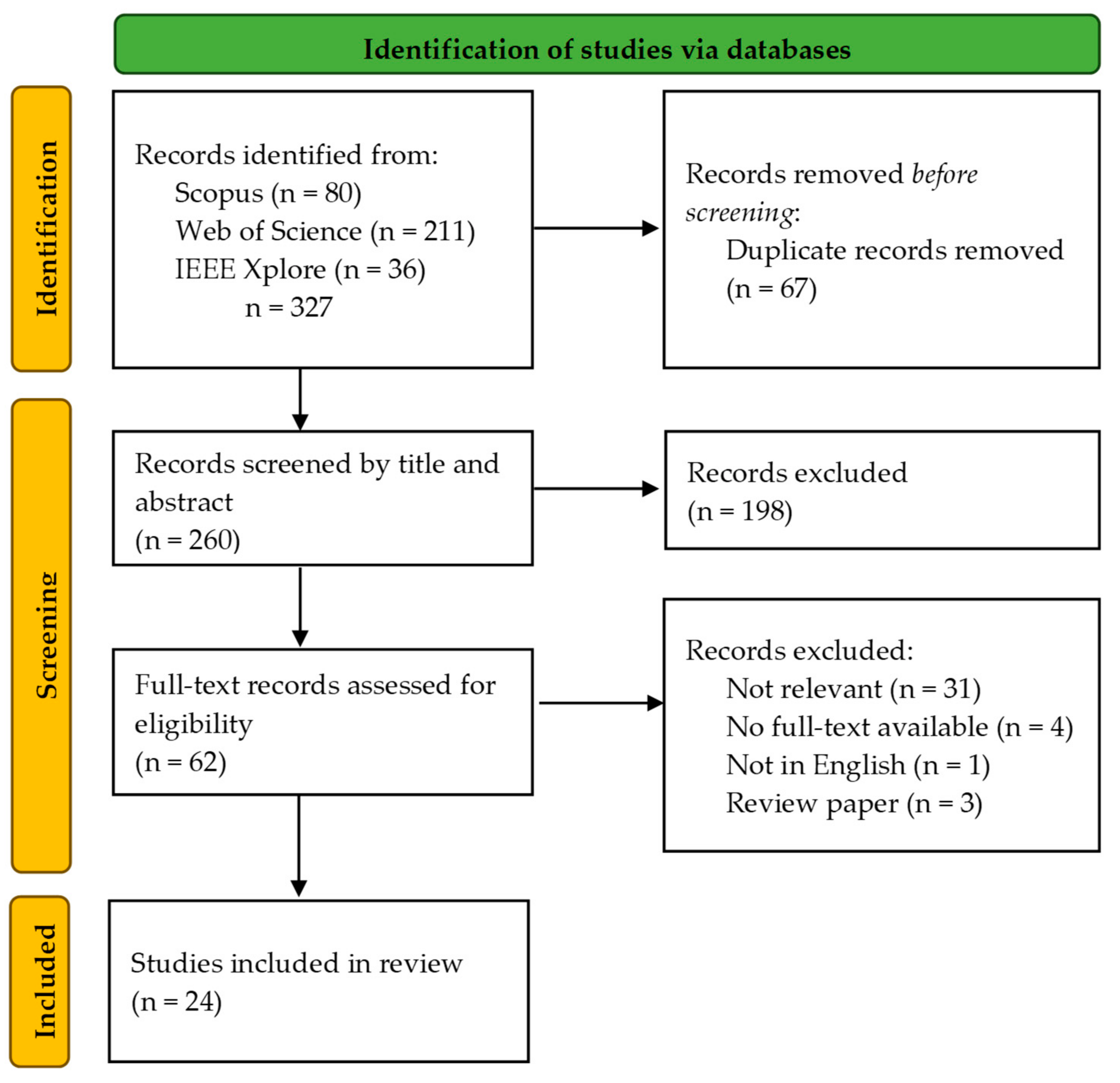
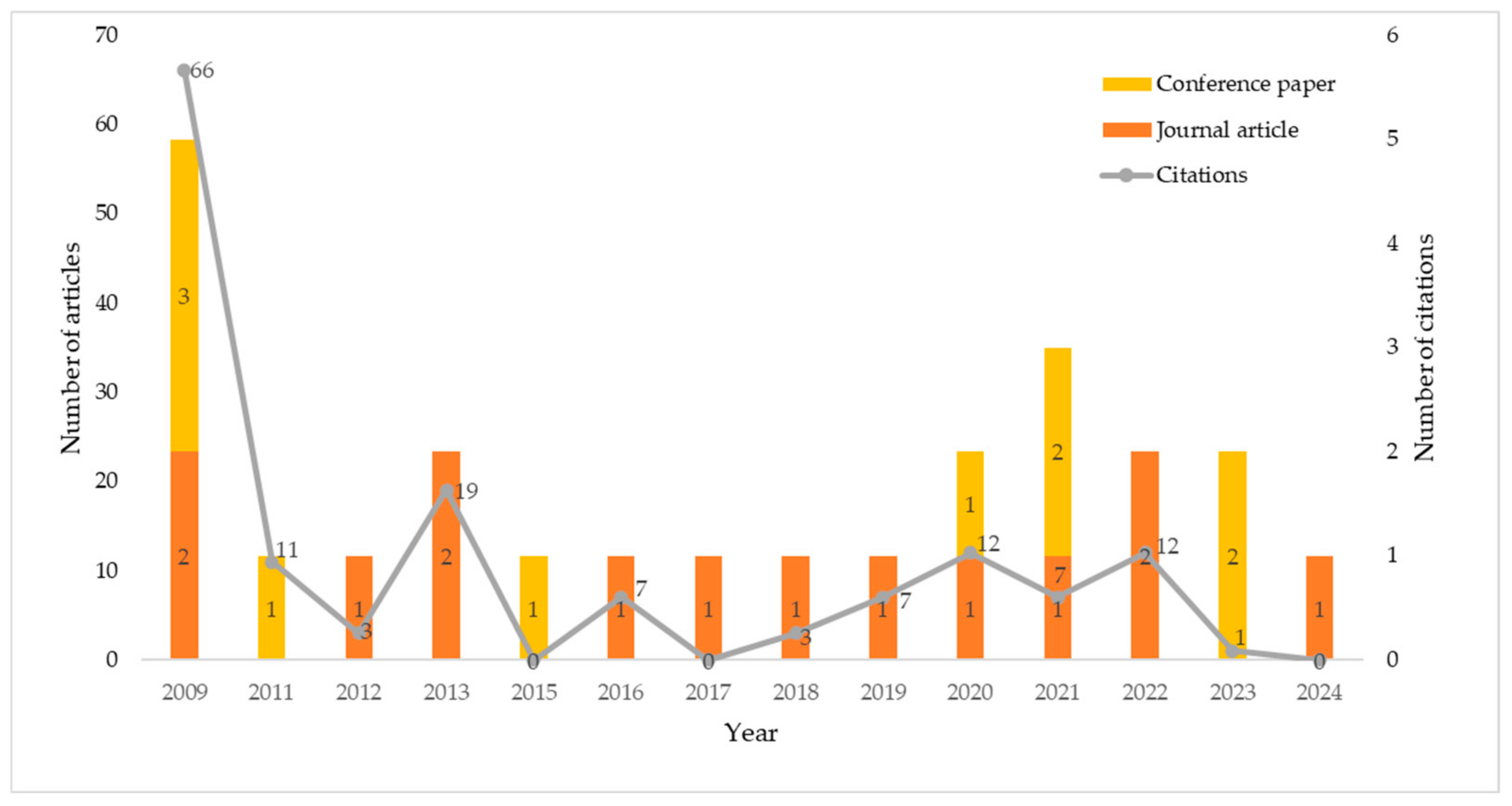
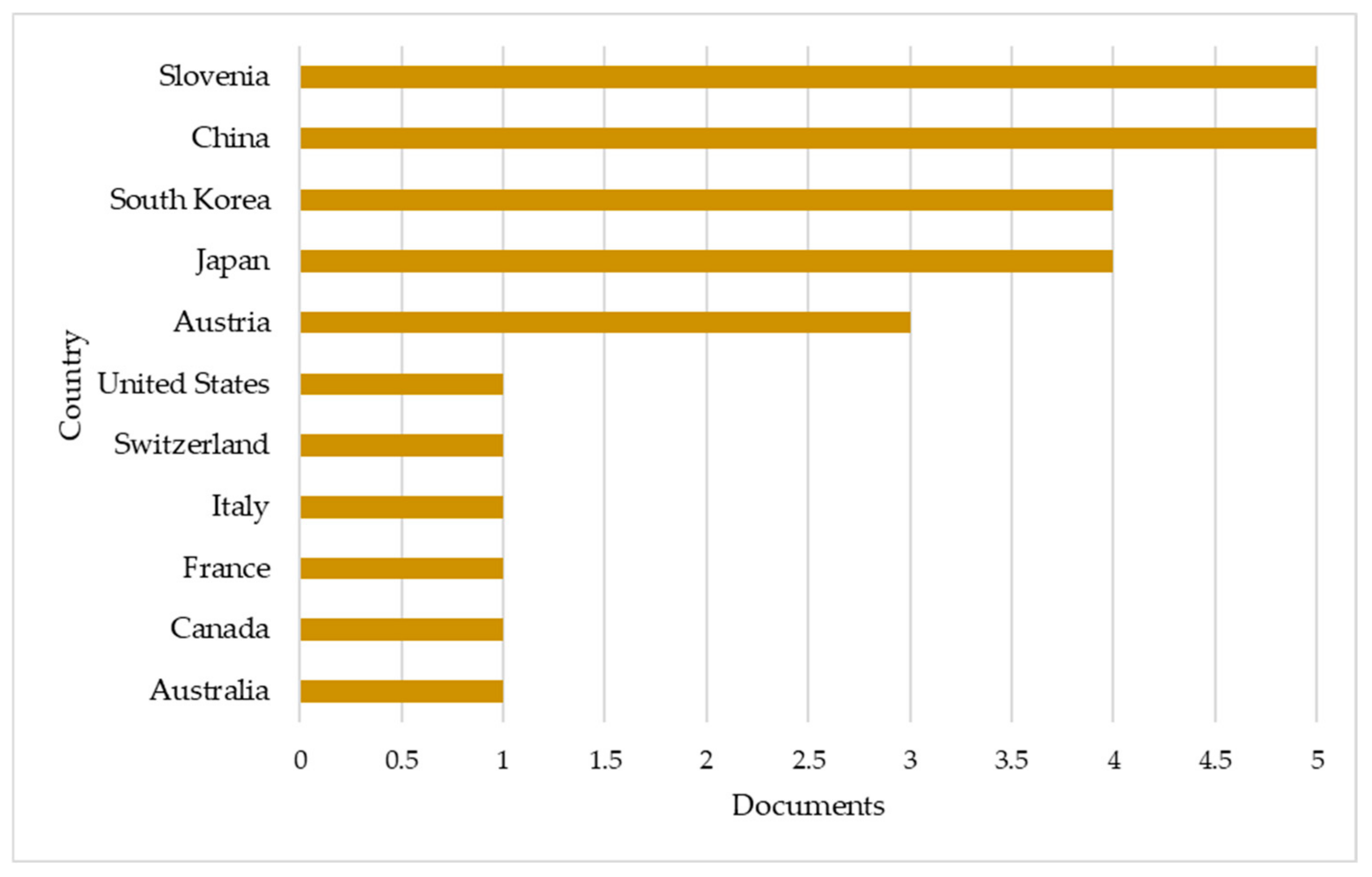

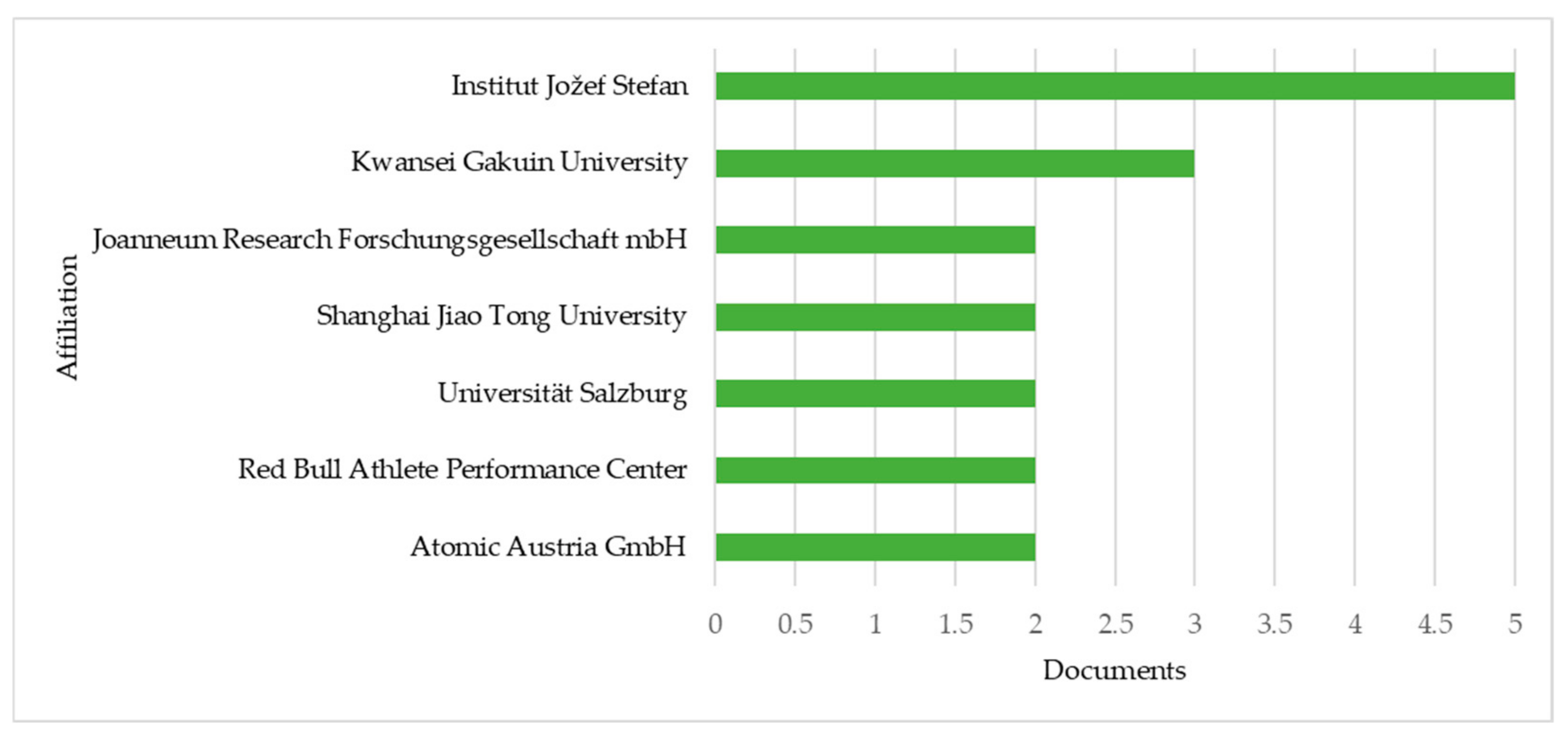


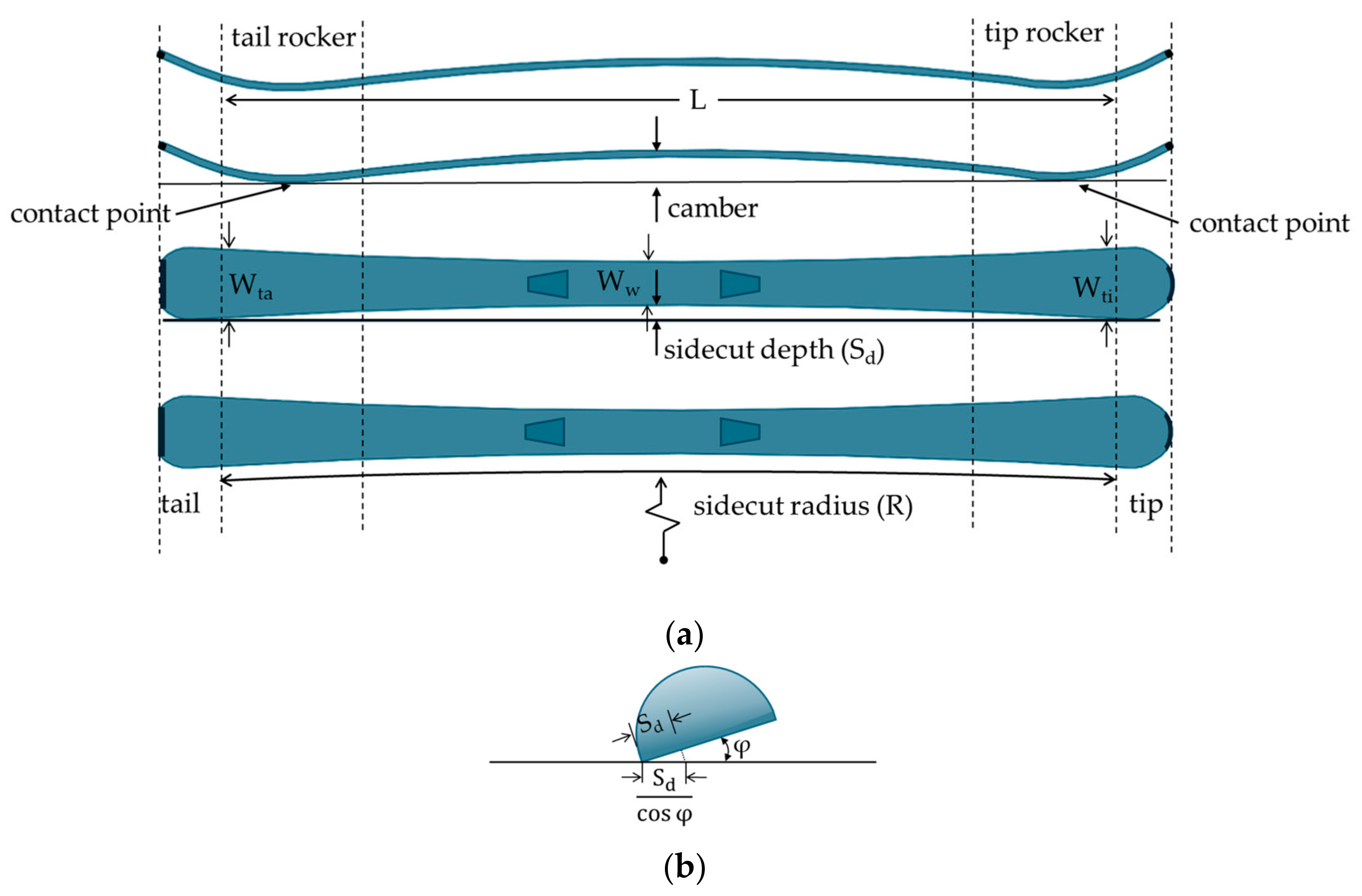
| No. | Ref. | PY | Country | Source |
|---|---|---|---|---|
| 1 | [4] | 2020 | Republic of Korea | International Journal of Precision Engineering and Manufacturing |
| 2 | [47] | 2021 | Republic of Korea | ICECCIT 2021 Proceedings |
| 3 | [48] | 2020 | France | CCTA 2020 Proceedings |
| 4 | [6] | 2016 | Canada | The Knowledge Engineering Review |
| 5 | [5] | 2019 | Republic of Korea | Sensors |
| 6 | [23] | 2012 | Japan | Journal of Robotics and Mechatronics |
| 7 | [49] | 2009 | Slovenia | Robotica |
| 8 | [3] | 2009 | Slovenia | IEEE/RSJ International Conference on Intelligent Robots and Systems |
| 9 | [50] | 2021 | Austria | Frontiers in Sports and Active Living |
| 10 | [20] | 2022 | Republic of Korea | Sensors |
| 11 | [21] | 2011 | Slovenia | Autonomous Robots |
| 12 | [51] | 2013 | Slovenia | IEEE/RSJ International Conference on Intelligent Robots and Systems |
| 13 | [52] | 2013 | Slovenia | International Journal of Humanoid Robotics |
| 14 | [53] | 2009 | Italy | ASME International Mechanical Engineering Congress and Exposition |
| 15 | [54] | 2009 | Japan | Applied Sciences |
| 16 | [55] | 2018 | Japan | Lecture Notes in Computer Science |
| 17 | [56] | 2022 | Austria | IEEE Sensors 2023 |
| 18 | [57] | 2023 | Austria | Sensors |
| 19 | [58] | 2017 | China | Acta Technica |
| 20 | [22] | 2021 | China | International Conference on Security, Pattern Analysis, and Cybernetics |
| 21 | [24] | 2023 | China | Lecture Notes in Computer Science |
| 22 | [59] | 2024 | China | IEEE Robotics and Automation Letters |
| 23 | [7] | 2009 | Japan | Sports Engineering |
| 24 | [60] | 2015 | China | IEEE International Conference on Industrial Technology Proceedings |
| No. | Ref. | Source | No. of Citations |
|---|---|---|---|
| 1. | [49] | Robotica | 23 |
| 2. | [3] | IEEE/RSJ IROS 2009 | 21 |
| 3. | [7] | Sports Engineering | 19 |
| 4. | [21] | Autonomous Robots | 16 |
| 5. | [51] | IEEE/RSJ IROS 2011 | 11 |
| 6. | [4] | International Journal of Precision Engineering and Manufacturing | 7 |
| 7. | [6] | Knowledge Engineering Review | 7 |
| 8. | [5] | Sensors | 6 |
| 9. | [57] | Sensors | 5 |
| 10. | [20] | Sensors | 4 |
| No. | Ref. | Research Aim | Robot/Type | Experiment Type | DOFs | Sensors | Control Subsystems | Software Tools |
|---|---|---|---|---|---|---|---|---|
| 1 | [4] | Develop a humanoid robot capable of autonomously performing in a ski giant slalom competition. | RoK-2 humanoid robot/SR | real | 20 | encoders, IMU, 3-axis FT sensors, video camera | image processing unit, deep learning-based object detection, stability control | N/A |
| 2 | [47] | Propose a trajectory planning algorithm for a multi-degree-of-freedom robot using CSP mode. | TiBo/SR | simulation (virtual) | NS | N/A | N/A | N/A |
| 3 | [48] | Develop a high-degree-of-freedom simulator for sliding sports. | Evr@ simulator/RP | real | 6 | displacement, velocity, and torque sensors of the PD4 motors, infrared camera | trajectory planning, virtual obstacle avoidance | Matlab |
| 4 | [6] | Develop a simple control system for an alpine skiing robot. | DARwIn-OP/SR | real | 12 | N/A | N/A | N/A |
| 5 | [5] | Propose a general stability control method for a bipedal alpine skiing robot using ZMP and LiDAR. | DARwIn-OP/SR | simulation | 12 | LiDAR | stability control, turning algorithm | Webots, Matlab |
| 6 | [23] | Develop a passive skiing robot to investigate the mechanisms of ski turns. | Passive turn skiing robot/SR | real | 1 | N/A | N/A | N/A |
| 7 | [55] | Develop a passive skiing robot to investigate the mechanisms of ski turns. | Passive turn skiing robot/SR | real | 3 | speed sensor, magnetic field sensor, wheel encoders, video camera | carved turn control | N/A |
| 8 | [54] | Develop a passive skiing robot to facilitate understanding of the turn mechanism for junior skiers. | Passive turn skiing robot/SR | real | 3 | small servomotor | turn control | N/A |
| 9 | [49] | Develop a skiing robot capable of autonomous navigation on a ski slope. | Planar leg robot/SR | real + virtual | 6 | electronic gyroscope, force sensors, motor position sensors, GPS receiver, camera | stability control, navigation, decision making | virtual reality environment |
| 10 | [3] | Develop a skiing robot capable of autonomous navigation on a ski slope using carving technique. | Planar leg robot/SR | real | 23 | electronic gyroscope, force sensors, motor position sensors, GPS receiver, camera | stability control, navigation, decision making | N/A |
| 11 | [21] | Propose a general control framework for ensuring stability of humanoid robots using ZMP. | Planar leg robot/SR | real | 3 (+6) | motor position sensors, force sensors, electronic gyroscope | stability control | N/A |
| 12 | [51] | Propose a novel method for ensuring stability of a skiing robot on an unknown ski slope. | Planar leg robot/SR | real | 3 (+6) | motor position sensors, force sensors, electronic gyroscope | stability control | N/A |
| 13 | [52] | Propose and evaluate methods for local navigation of a skiing robot using visual perception. | Planar leg robot/SR | real | 3 | motor position sensors, force sensors, electronic gyroscope | stability control, navigation | N/A |
| 14 | [20] | Develop a humanoid robot capable of autonomously performing in a ski giant slalom competition. | DIANA/SR | real | 2 | stereo camera, LiDAR sensors, F/T sensors, IMU sensors | path planning, vision recognition, carved turn control, stability control | ROS, Matlab |
| 15 | [58] | Develop a freestyle skiing robot model and gait planning based on human body data. | Virtual prototype/SR | simulation | NS | N/A | gait planning | ADAMS |
| 16 | [22] | Develop a skiing robot capable of independently performing skiing movements using DDPG reinforcement learning. | Humanoid robot/SR | real | 12 | N/A | N/A | N/A |
| 17 | [59] | Develop an obstacle avoidance method for skiing robots. | Six-legged skiing robot/SR | real | 5 | IMU, LiDAR | locomotion controller, turn control | N/A |
| 18 | [24] | Design, control, and apply a novel six-legged skiing robot on flat and slope terrains. | Six-legged skiing robot/SR | real | 5 | IMU, LiDAR | trajectory planning, vbalance control, turn control | NX |
| 19 | [7] | Develop a robot that simulates human leg joint motions during carved turns. | Robotic system/SR | real | 6 × 2 | strain gauges, wheel encoders, pulse count sensor, magnetic field sensor | turn control | N/A |
| 20 | [60] | Develop a freestyle skiing robot model and gait planning based on human body data. | Virtual prototype/SR | simulation | 24 | gyroscope, accelerometer, six-axis force sensor | stability control, gait controller | ADAMS |
| No. | Ref. | Research Aim | Robot/Type | Experiment Type | DOFs | Sensors | Control Subsystems | Software Tools |
|---|---|---|---|---|---|---|---|---|
| 1 | [50] | Develop a new method to release ski bindings using an industrial robot. | KUKA Quantec series/RA | real | 1 | PyzoFlex® sensors, optoelectrical measuring system | motion pattern recognition, release force determination | Matlab |
| 2 | [53] | Propose a novel device and method to evaluate the mechanical behavior of ski boot stiffness. | XY Cartesian robot/CR | real | 1 | force and position sensors | ski boot stiffness calculation | N/A |
| 3 | [57] | Test the performance of an enhanced ski deflection measurement prototype in dynamic settings. | IRB 6400R, ABB AG/RA | real | 6 | PyzoFlex® sensors, 12 sensor foils, optoelectrical measuring system, eight active infrared cameras | measurement data acquisition, synchronization unit | Matlab |
| 4 | [56] | Evaluate the feasibility of detecting torsional deflections in alpine skis using a parallel sensor layout. | IRB 6400R, ABB AG/RA | real | 6 | PyzoFlex® sensors, 12 sensor foils, optoelectrical measuring system, eight active infrared cameras | measurement data acquisition, synchronization unit | Matlab |
Disclaimer/Publisher’s Note: The statements, opinions and data contained in all publications are solely those of the individual author(s) and contributor(s) and not of MDPI and/or the editor(s). MDPI and/or the editor(s) disclaim responsibility for any injury to people or property resulting from any ideas, methods, instructions or products referred to in the content. |
© 2025 by the author. Licensee MDPI, Basel, Switzerland. This article is an open access article distributed under the terms and conditions of the Creative Commons Attribution (CC BY) license (https://creativecommons.org/licenses/by/4.0/).
Share and Cite
Boboc, R.G. Robotic Applications in Skiing: A Systematic Review of Current Research and Challenges. Machines 2025, 13, 397. https://doi.org/10.3390/machines13050397
Boboc RG. Robotic Applications in Skiing: A Systematic Review of Current Research and Challenges. Machines. 2025; 13(5):397. https://doi.org/10.3390/machines13050397
Chicago/Turabian StyleBoboc, Răzvan Gabriel. 2025. "Robotic Applications in Skiing: A Systematic Review of Current Research and Challenges" Machines 13, no. 5: 397. https://doi.org/10.3390/machines13050397
APA StyleBoboc, R. G. (2025). Robotic Applications in Skiing: A Systematic Review of Current Research and Challenges. Machines, 13(5), 397. https://doi.org/10.3390/machines13050397






